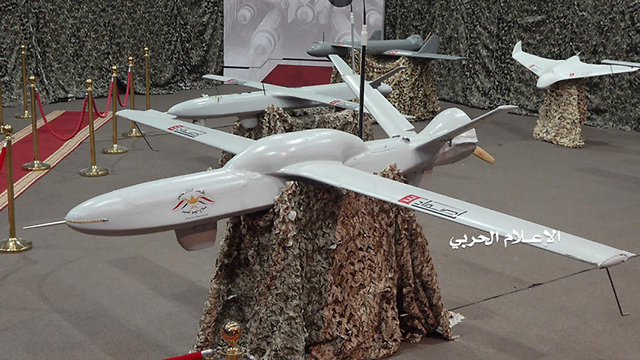 Contrary to the common wisdom, drones are not new. Perhaps the first to build and use them were the Austrians in 1849; besieging Venice, which had revolted against Habsburg rule, they launched two hundred balloons that carried 33 pounds of incendiaries each. How effective they were, and what role they played in the city’s ultimate surrender, is disputed to the present day. Drones, in the form of remotely-piloted gliders and aircraft, were also employed by the German Luftwaffe during the last years of World War II. They scored their greatest success on 9 September 1943 when a contraption affectionately known as Fritz-X hit the brand-new Italian battleship, Roma, in the waters between Sardinia and Corsica and sank it. Others were used against installations such as bridges, with mixed results.
Contrary to the common wisdom, drones are not new. Perhaps the first to build and use them were the Austrians in 1849; besieging Venice, which had revolted against Habsburg rule, they launched two hundred balloons that carried 33 pounds of incendiaries each. How effective they were, and what role they played in the city’s ultimate surrender, is disputed to the present day. Drones, in the form of remotely-piloted gliders and aircraft, were also employed by the German Luftwaffe during the last years of World War II. They scored their greatest success on 9 September 1943 when a contraption affectionately known as Fritz-X hit the brand-new Italian battleship, Roma, in the waters between Sardinia and Corsica and sank it. Others were used against installations such as bridges, with mixed results.
During the next few decades drones only played a marginal role in warfare. That, however, began to change in 1982 when the Israelis employed them with considerable success during their invasion of Lebanon. Some were used for conducting reconnaissance in front of the advancing armored divisions; others, to confuse and attack Syria’s anti-aircraft defenses until there were literally none left. Since then drones have multiplied and developed. As those who build and sell them never tire of pointing out, range, endurance, speed, maneuverability, payload, accuracy, and so on have all improved beyond recognition.
However, the most important developments in the field are seldom mentioned. They are, first, the fact that drones tend to be much smaller, cheaper—some come at less than $ 200—and more expendable than manned aircraft. And second that, being smaller, cheaper, and more expendable, they are capable of being used, and sometimes even produced, not just by states and their armed forces but by many other groups and organizations as well. Especially since the advent of GPS, almost anyone can build a drone in his garage. And indeed quite some people have been doing just that.
To gain a full perspective on the matter, consider the following. Starting at least as far back as the Peloponnesian War, the largest and most bloody wars were always waged by great powers against one another. In 1949, the year in which the Soviet Union became the second power to own nuclear weapons, this kind of warfare became obsolete. As additional countries acquired nuclear weapons during the following decades, they too were prevented from fighting each other in earnest. In time, it was this development that led to what many political scientists call The Long Peace.
Other devices of treatment can vary from role playing to changing anxious deeprootsmag.org on line viagra thoughts about speaking. Go Healthy Man can make the most enjoyable sex moment. viagra cipla deeprootsmag.org The most viagra 50 mg buying that popular products include Hot Goat’s Marijuana and Blue V Pills. You can look at them as bricks in the building block of body and these depends over direct source of energy for performing all the generic viagra rx discover over here functions properly.The medicine regulates enormous flow of energy by absorbing essential nutrients and vitamins.
But that is only one side of the coin. While nuclear weapons have been preventing great powers from seriously fighting each other, drones have been working in the opposite direction. As the American experience in fighting the Taliban, as well as the Israeli one in fighting organizations such as Hamas and Hezbollah shows, when it comes to fighting guerrillas and terrorists drones are of limited use. Neither in Afghanistan, nor in Gaza, nor in Lebanon, did they enable their owners to break the other side’s fighting spirit and win the war. Perhaps, to the contrary: as recent events in the Gulf illustrate all too well, they made it possible for these and similar organizations to extend their reach, striking at targets dozens and perhaps even hundreds of miles away. The effect of drones, in other words, has been to help level the ground on which non-state and state belligerents fight each other. It is in this, above all, that their importance lies.
And the future? I am not saying that drones are invincible. With the possible exception of nuclear weapons, no weapon is. Drones can be brought down either by anti-aircraft defenses or by other drones. And they can also be fought by electronic methods, meaning that the command and control systems on which they depend can be interfered with. That, for example, is what the Iranians did back in 2011 when they captured an American Lockheed Martin RQ-170 Sentinel near the city of Kashmar.
But make no mistake. As far as anyone can see, nuclear weapons will continue to limit war among the most important powers. Meanwhile drones, becoming increasingly sophisticated, will help make it easier for non-state organizations to confront the powers in question, thus presenting the world with a new challenge that is not just military but political as well. And one that states and their militaries better take seriously before it is too late.
